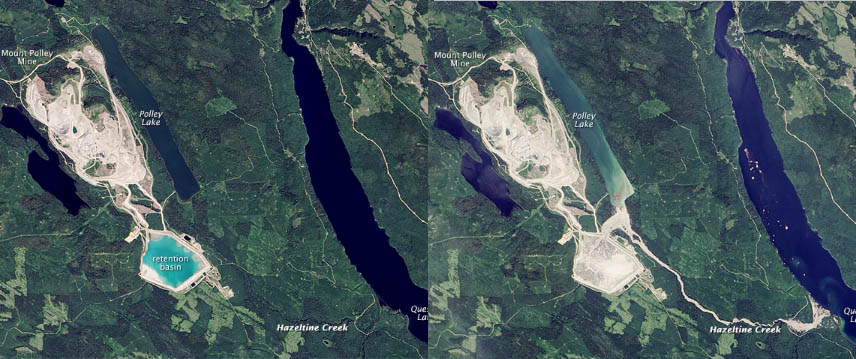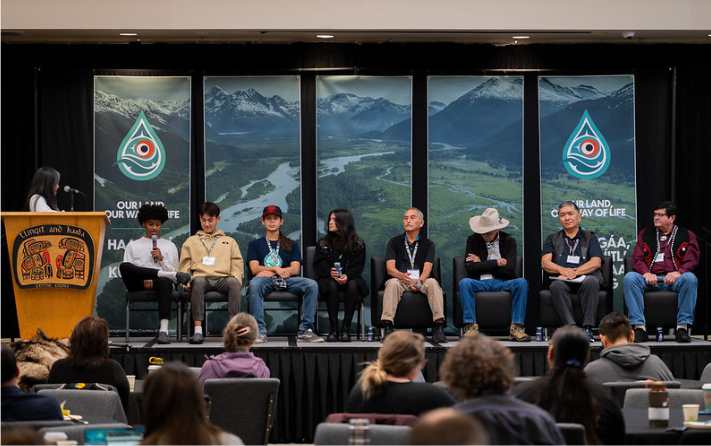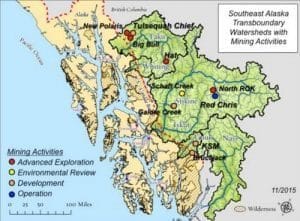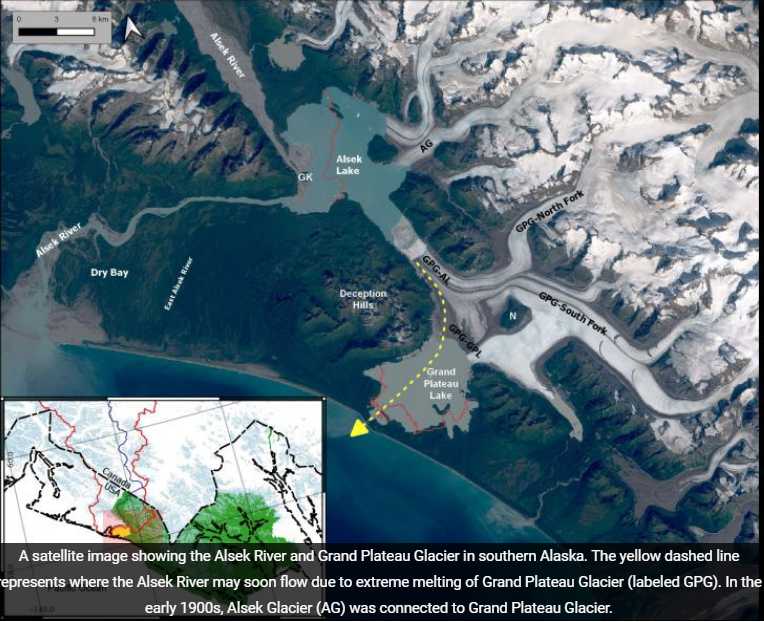
Juneau, AK (August 12, 2016) – Senior officials from the United States (US) Department of State and Environmental Protection Agency (EPA) traveled to Southeast Alaska last week to meet with tribes and the State of Alaska on trans-boundary mining activities occurring in Canada. Serious concerns have been raised regarding the impact mining activities have on the headwaters of Southeast Alaska’s four major river systems (Alsek, Taku, Stikine and Unuk), watersheds, and ecosystems. Central Council of Tlingit and Haida Indian Tribes of Alaska (Central Council) requested the government-to-government meeting which took place August 9-11, 2016 in Juneau and Ketchikan.
During the Federal official visit, Department of State Director of the Office of Canadian Affairs Christopher Sandrolini, Consulate General Vancouver Lynne Platt, EPA Principal Deputy Administrator of the Office of International and Tribal Affairs Jane Nishida, EPA Region 10 Administrator Dennis McLerran, and EPA Director of the American Indian Environmental Office JoAnn Kay Chase participated in discussions focused on areas of mutual interests and collaboration necessary to identify, analyze, remediate, mitigate, and prevent harm to the ecosystem and watersheds of Southeast Alaska’s major rivers.[xyz-ihs snippet=”adsense-body-ad”]
“Our efforts will help to reduce or remove existing contamination and pollution from our lands and waters discharged by the mines, prevent the likelihood of an environmental disaster like the Mt. Polley disaster of 2014, and provide a foundation for improving our fisheries and adapting to climate change,” said President Richard Peterson.
Plans were also discussed for direct participation with the Dominion of Canada and the First Nations of the British Columbia (BC) and Yukon Territory provinces through a variety of mechanisms, including a Statement of Cooperation with BC led by Lt. Governor Byron Mallott. Efforts to establish international relations are also being made by Central Council. Strengthening our relationship with Canada’s First Nations will unify our voice and help elevate tribal government relations within their provinces.
“Operators and regulators must recognize the importance of Alaska Native and First Nation traditional knowledge as essential to effectively and meaningfully develop environmental plans and programs,” said First Vice President Rob Sanderson Jr.
Discussions also touched on the Province of BC Auditor General’s May 2016 report, “An Audit of Compliance and Enforcement of the Mining Sector,” that concluded the regulatory compliance and enforcement activities of the Ministry of Energy and Mines and the Ministry of Environment are not protecting the province from significant environmental risks of mining activities.
Throughout the discussions, Central Council emphasized there is no opposition to mining projects in Canada or Alaska if appropriately designed, operated, and maintained under a robust regulatory regime. Efforts are underway to identify funding for an ecosystem-wide environmental assessment and adaptation plan to identify a baseline for environmental quality, establish key indicators, and apply appropriate adaptation measures.
Central Council’s Second Vice President Will Micklin stated, “The mining activities in the transboundary area of British Columbia and the Yukon can and must be conducted safely through appropriate operating design in accordance with regulations, standards, and best practices with guarantees of fiduciary responsibility for environmental damage. Environmentally safe and financially responsible mining practices cannot be ignored. Neglect only transfers the burden of pollution and cost to our downstream Southeast Alaska communities.”
Central Council is also working to extend its current collaborative efforts to other Federal agencies such as the US Coast Guard, Forest Service, National Oceanic and Atmospheric Administration, Fish and Wildlife Service, Geological Survey, and Army Corps of Engineering through an innovative framework of inter-agency work groups and self-determination agreements.
Representatives from Sealaska Corporation, Douglas Indian Association, Organized Village of Kasaan, Ketchikan Indian Community, Bureau of Indian Affairs, and US Coast Guard also participated in the meeting. Presentations were provided by Central Council’s Environmental Specialist Jennifer Hanlon, Lt. Governor Mallott, and key State agency officials responsible for mining regulation. Valuable testimony was also provided by Tlingit elders including Willard Jackson and Nathan Jackson during the meeting in Ketchikan on BC’s mining activities and the threat it has posed to the salmon and eulachon of the Unuk River.
Highlights of the Federal officials’ visit included tours of Saxman Totem Park, Totem Bight State Park, Treadwell Mine, the old Douglas Indian village (Sandy Beach) with elder John Morris Sr., lunch with Governor Bill Walker, and a demonstration of how Coho salmon is prepared for smoking by John Smith of Hoonah.
“Transboundary mining will remain a top focus of Central Council to ensure the environmental security and stability for our Native communities,” said President Peterson. “We express our deep appreciation to the Department of State and EPA for fully engaging in government-to-government relations with Alaska Native tribes and fulfilling the promise of the Obama Administration.”[xyz-ihs snippet=”Adversal-468×60″]








